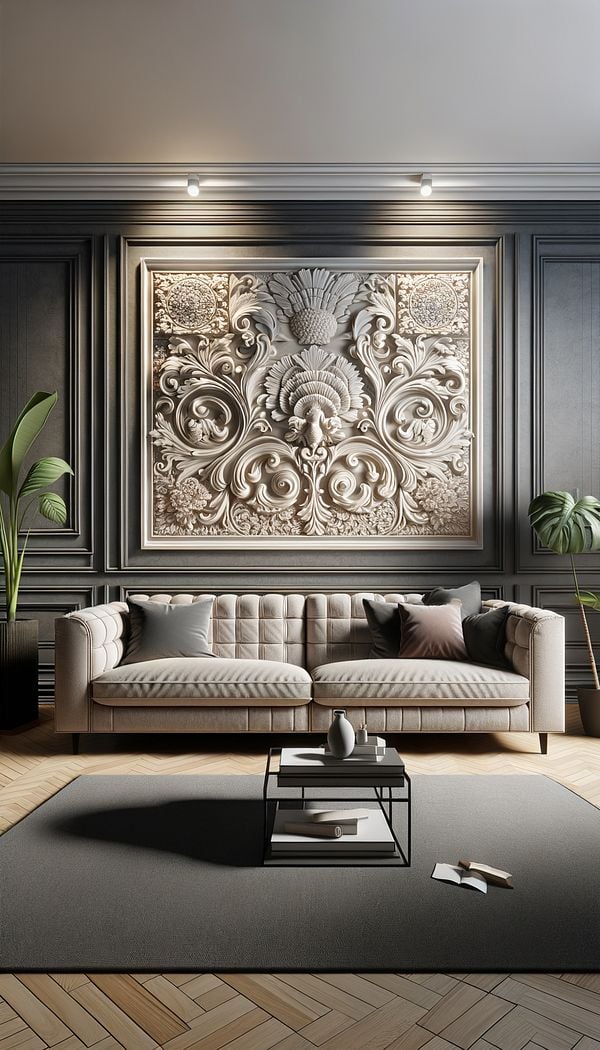What is Relief?
In interior design, relief refers to a method of molding, carving, or stamping in which the design stands out from the surface.
Description
Relief in the context of interior design encompasses a variety of techniques used to add depth and texture to surfaces within a space. It involves creating a raised or projected image on a flat background, making the design visually pop out. This technique can be applied through different mediums including wood, stone, plaster, or metal, bringing a unique dimensional element to the decor. Reliefs can range from simple geometric patterns to intricate landscapes or figures, depending on the design aesthetic.
The application of relief in interior design serves multiple purposes. It not only adds visual interest and depth to otherwise flat surfaces but also allows for a play of light and shadow, thus enhancing the overall ambiance of a room. Additionally, reliefs can be used to tell a story or convey a theme, making them a powerful tool in creating a narrative within a space.
Usage
Relief is often seen in architectural elements such as wall panels, door fronts, fireplace mantels, and ceiling designs. It is also a popular decorative technique in furniture design, where it can be used to accent cabinets, dressers, and other pieces.
FAQs
-
Can relief be applied to any surface?
Yes, relief can be applied to numerous surfaces including walls, furniture, and decorative objects. The choice of surface and material depends on the desired aesthetic and the specifics of the interior design project.
-
Does relief require special maintenance?
The maintenance of relief depends on the materials used. For example, plaster and wood may require careful dusting and occasional sealing, while metal might need polishing to maintain its luster.
-
Is relief suitable for all design styles?
Yes, relief can be adapted to suit a wide range of design styles, from classical to contemporary, depending on the patterns and techniques used.
Practical Application
When incorporating relief into your interior design, consider the scale and detail of the design to ensure it complements the room’s overall decor. Lighting plays a crucial role in enhancing the features of relief, so strategic placement of light sources can maximize its visual impact. Additionally, choosing the right material for the relief based on the room’s usage and aesthetic can significantly impact the overall look and feel.
-
Architectural Elements199 articles
-
Decorative Techniques322 articles
-
Fabrication & Craftsmanship133 articles
-
Decorating Principles & Elements330 articles
-
Wall Treatments & Finishes157 articles
-
Diamond TuftingA decorative technique with fabric buttoned into a pattern resembling diamonds.
-
PatinaPatina is a thin layer that forms on the surface of copper, bronze, and similar metals (due to oxidation), or on wooden and leather surfaces through aging, wear, and exposure.
-
VintageVintage refers to items, especially furniture and decor, from a previous era that have a sense of history and timeless appeal.
-
Accent LightingAccent lighting is directional lighting that highlights or draws attention to a particular object or area.
-
Cane ChairA cane chair is a lightweight, durable chair made from woven rattan strips.
